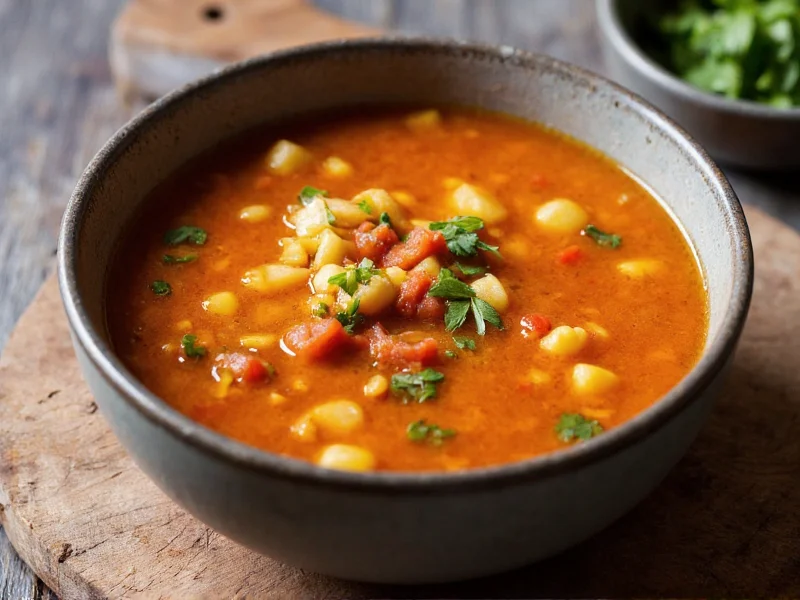Sour soups represent one of the most universally beloved culinary traditions across diverse cultures. These flavorful broths achieve their characteristic tang through carefully selected souring agents that transform ordinary ingredients into extraordinary culinary experiences. Understanding what makes a soup "sour" goes beyond simple acidity—it's about balance, tradition, and the science of flavor development.
The Science Behind Sour Soup Flavor Profiles
Acidity in soups isn't merely about adding tartness—it creates a flavor balancing act that enhances other taste elements. When properly calibrated, sour components activate saliva production, which improves overall flavor perception and aids digestion. The ideal pH range for most sour soups falls between 3.5 and 4.5, creating that refreshing tang without overwhelming bitterness.
Professional chefs understand that sourness works in concert with other flavors. The Japanese concept of umami finds perfect complement in sour broths, where ingredients like fermented fish sauce or dried shrimp add depth that balances the sharp acidity. This interplay creates what food scientists call "flavor layering," making each spoonful more complex and satisfying than the last.
Global Sour Soup Traditions Worth Exploring
Every culinary tradition has developed its own approach to sour soups, reflecting local ingredients and historical food preservation techniques. These traditional sour soup recipes showcase remarkable diversity while maintaining that essential tangy character.
| Soup Name | Origin | Primary Souring Agent | Key Ingredients |
|---|---|---|---|
| Tom Yum | Thailand | Lemongrass, kaffir lime, galangal | Shrimp, mushrooms, chili |
| Żurek | Poland | Fermented rye flour | Sausage, potatoes, hard-boiled egg |
| Sinigang | Philippines | Tamarind | Pork, shrimp, assorted vegetables |
| Borscht | Eastern Europe | Beetroot, vinegar | Beets, cabbage, dill |
| Sour Soup | China | Preserved vegetables | Pork ribs, mustard greens |
Mastering Sour Soup Ingredients and Techniques
Creating authentic sour soup requires understanding which souring agents work best for different applications. Each ingredient brings unique properties that affect both flavor and texture:
- Tamarind: Provides complex sweet-sour notes ideal for Southeast Asian dishes like sinigang. Best added early in cooking to fully integrate flavors.
- Vinegar varieties: From mild rice vinegar to robust apple cider vinegar, each brings different acidity levels. Always add vinegar toward the end of cooking to preserve its bright flavor.
- Citrus elements: Lime and lemon juice add fresh acidity but degrade with prolonged cooking. Add these during the final minutes for maximum impact.
- Fermented bases: Polish żurek relies on fermented rye flour (zakwas), which develops complex sour notes over days of natural fermentation.
Health Benefits of Regular Sour Soup Consumption
Beyond their delightful flavors, traditional sour soups offer significant health advantages. The natural acids in these broths enhance mineral absorption from other ingredients, making them nutritionally superior to neutral pH soups. Many sour soup ingredients contain probiotics from natural fermentation processes, supporting gut health and immune function.
Research shows that moderate consumption of sour soups can improve digestion by stimulating gastric juice production. The vinegar-based components may help regulate blood sugar levels when consumed before meals—a practice common in Mediterranean and Asian culinary traditions. However, individuals with acid sensitivity should moderate their intake of highly acidic varieties.
Avoiding Common Sour Soup Preparation Mistakes
Even experienced cooks can stumble when preparing sour soups. Understanding these pitfalls ensures perfect results every time:
- Adding acid too early: Many home cooks make the mistake of adding souring agents at the beginning of cooking, which can cause flavors to become flat and one-dimensional. For brightest results, add citrus and vinegar in the final 5-10 minutes.
- Overcompensating with sugar: When a soup becomes too sour, the instinct is often to add sugar. Instead, try diluting with additional broth or adding creamy elements like coconut milk that balance without masking flavors.
- Using artificial souring agents: Bottled lemon juice and artificial flavorings lack the complexity of fresh ingredients. For authentic sour soup preparation techniques, always opt for natural souring components.
Crafting Your Perfect Sour Soup Balance
The hallmark of exceptional sour soup lies in achieving perfect flavor equilibrium. Professional chefs use the "triangle method" to balance sour, salty, and sweet elements. Start with your base broth, then gradually introduce sour components while tasting continuously. The ideal sour soup should make your mouth water slightly without causing puckering.
When adjusting sourness, remember that flavors continue developing even after cooking stops. Always allow your soup to rest for 15-20 minutes before final seasoning adjustments. This resting period lets the souring agents fully integrate with other ingredients, creating a more harmonious final product.











 浙公网安备
33010002000092号
浙公网安备
33010002000092号 浙B2-20120091-4
浙B2-20120091-4